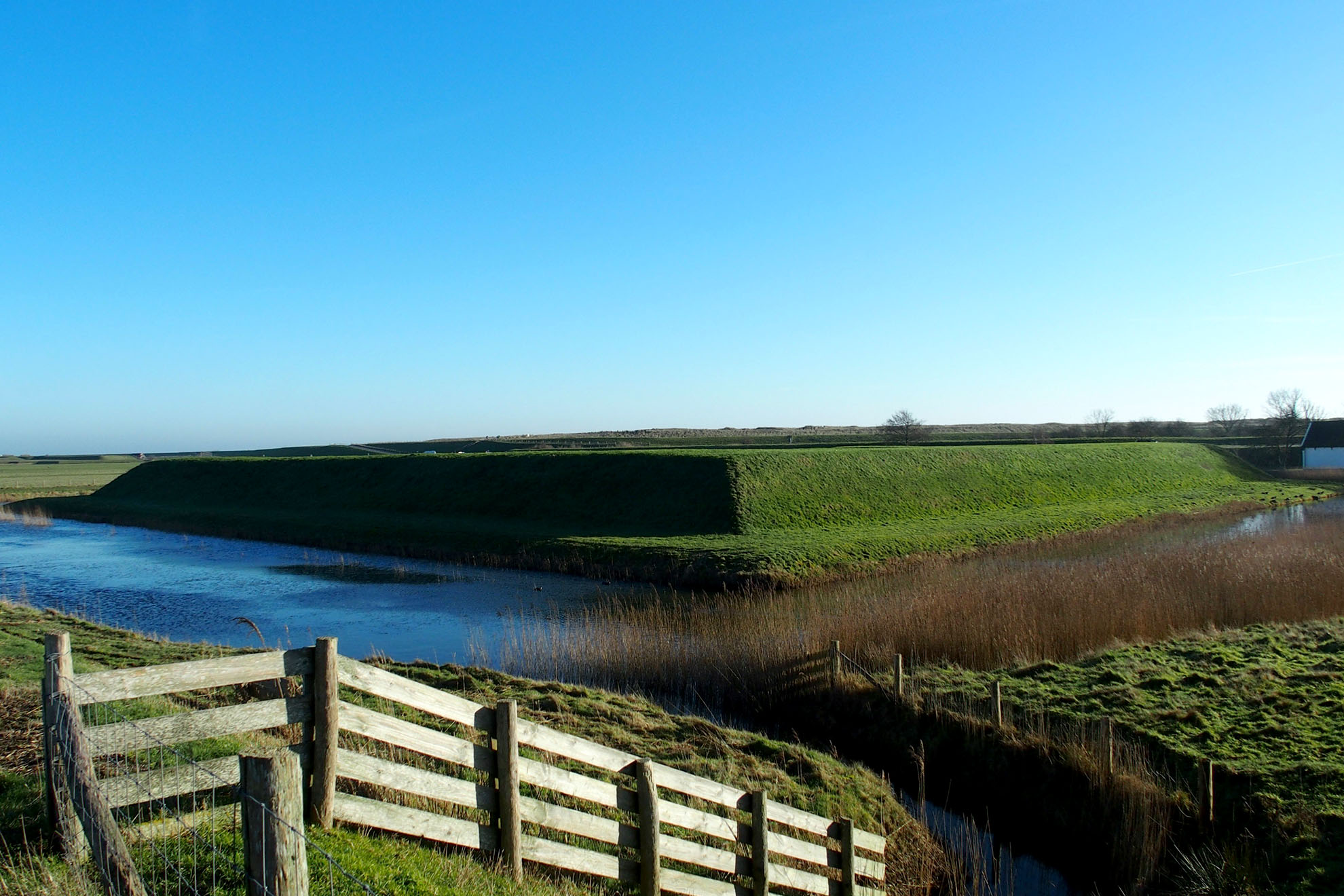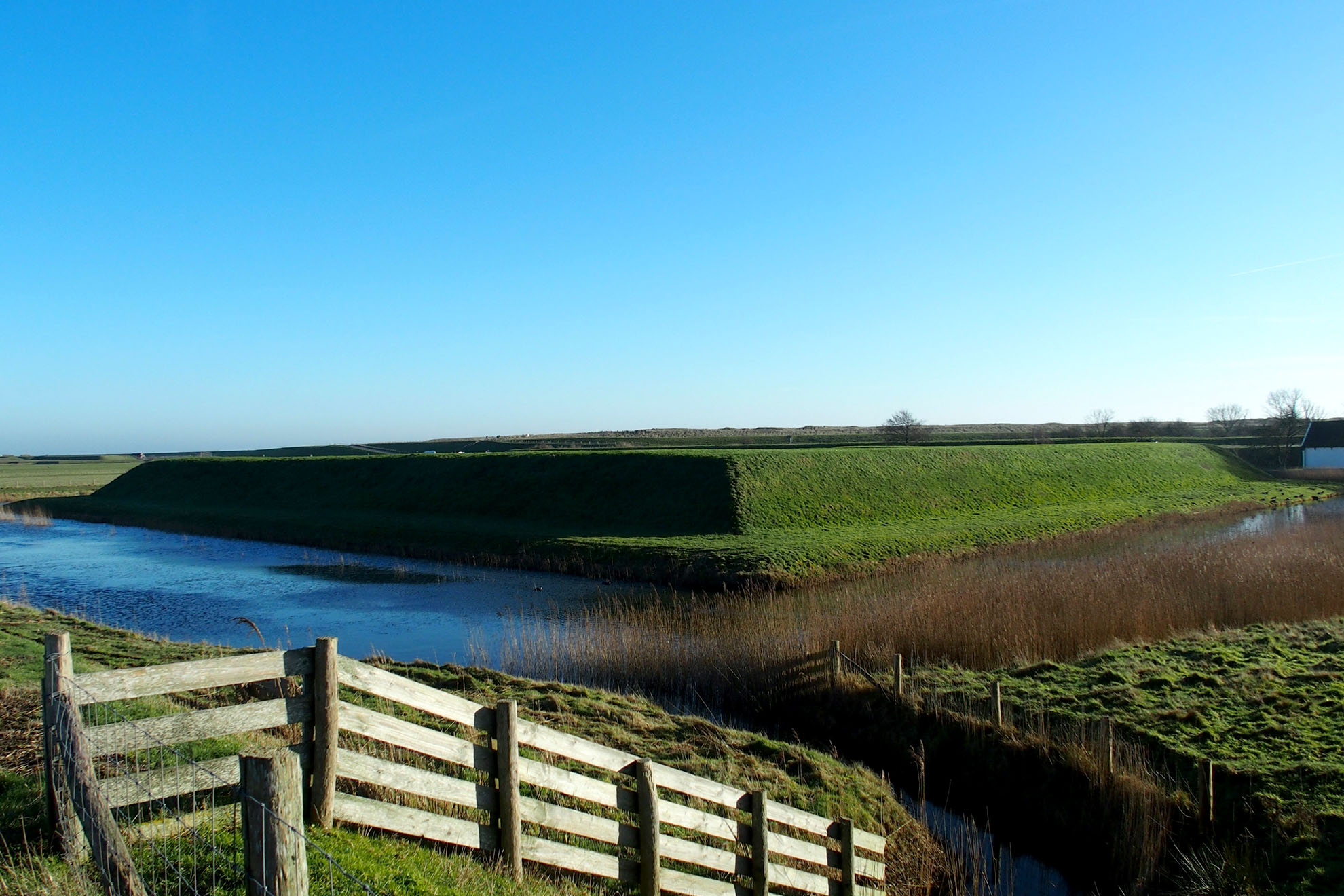Hulpfort Redoute

Op 6 april 1811 schreef keizer Napoleon Bonaparte zijn Nôte sur l’Ile de Texel. Daarin omschreef hij nauwgezet hoe de vestingwerken op Texel moesten worden uitgebreid. Het Marsdiep en de Reede van Texel waren immers van groot strategisch belang. Mogelijk zouden de Engelsen langs deze weg zijn keizerrijk binnen kunnen vallen. Fort de Schans moest worden vergroot en versterkt. Bovendien moest de Schans worden voorzien van twee hulpforten, de Lunette en de Redoute.
Oorlog in Noord-Holland
Twaalf jaar daarvoor, in 1799, landde een Engelse invasiemacht bij Callantsoog. Later sloten Russische troepen zich daarbij aan. Holland viel destijds onder de Bataafse republiek, een vazalstaat van Frankrijk. Na verschillende veldslagen wisten de Frans-Nederlandse legers de aftocht van de invasiemacht te bewerkstelligen. Dit drama toonde aan dat de Noord-Hollandse kust, en dus ook die van Texel, een zwakke plek vormden in de verdediging van het Franse rijk. De Fransen begonnen uitgebreide plannen voor de versterking te ontwikkelen, later met steun van de keizer.
Inspectie
Napoleon liet er geen gras over groeien. Hij gaf meteen opdracht om de aanleg van de versterkingen op Texel te beginnen. Op 16 oktober 1811 kwam hij hoogstpersoonlijk naar het eiland om de voortgang te inspecteren.
De plek van de Redoute

Het hulpfort de Redoute werd aangelegd langs de waddendijk, een kleine kilometer ten westen van Fort de Schans. Indertijd was de lage dijk die nu door het land richting Den Hoorn kronkelt nog de zeewering, en die moest volgens het plan van de keizer extra verdedigd worden. Bovendien moest de artillerie op de Redoute de Waterweg, de toegangsweg tot de Hoge Berg en Den Burg, af kunnen sluiten als dat nodig was. Na de aanleg van de Redoute stonden de meeste kanonnen gericht op de Hoge Berg. De Fransen verwachtten de grootste dreiging vanuit het westen.
Afgegraven
Na het ineenstorten van het Franse keizerrijk werd het militaire belang van de verdedigingswerken op Texel snel minder. De forten raakten in verval. In 1922 raakte de Redoute uiteindelijk zijn status van vestingwerk kwijt. Negen jaar later werden de wallen afgegraven. Het zand werd gebruikt om de dijken te versterken. De gracht bleef nog wel bestaan.
Restauratie
In 1976 kreeg de Redoute officieel de status van monument. Het fort is eigendom van Natuurmonumenten. In 2010 zijn de aarden wallen van het fort weer in hersteld. Op die manier is de cultuurhistorische waarde van het fort weer in beeld gebracht.
Niet vrij toegankelijk
In deze rustige uithoek van het Hoge Berggebied maken veel vogels, kleine zoogdieren en insecten gebruik van het fort. De herstelde vestingwallen bieden groeiplaatsen voor bijzondere planten. De natuur krijgt hier voorrang. De Redoute is daarom niet vrij toegankelijk.








